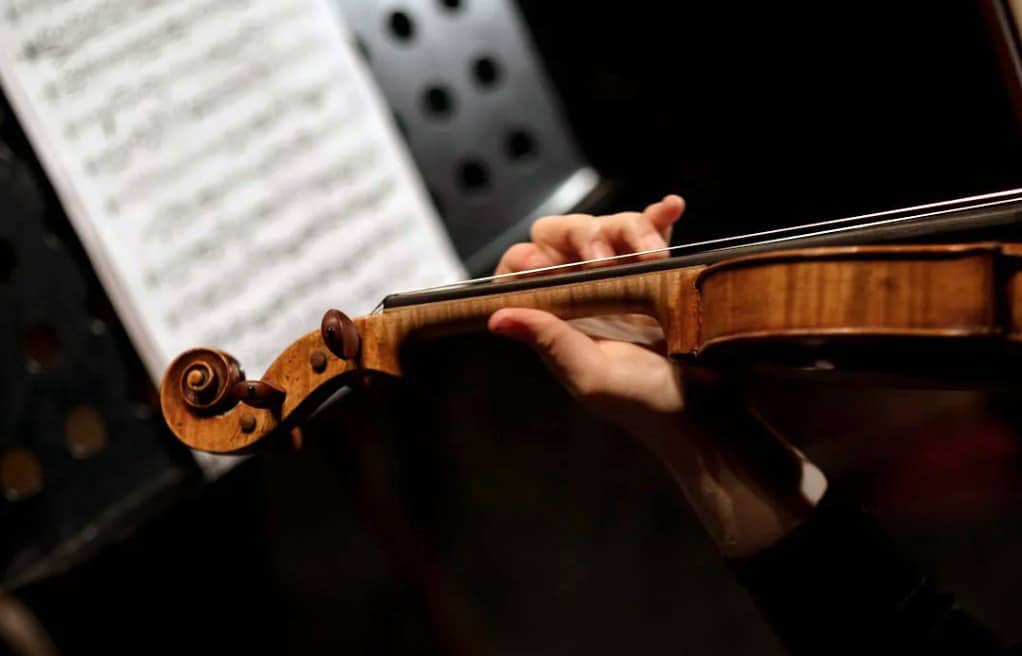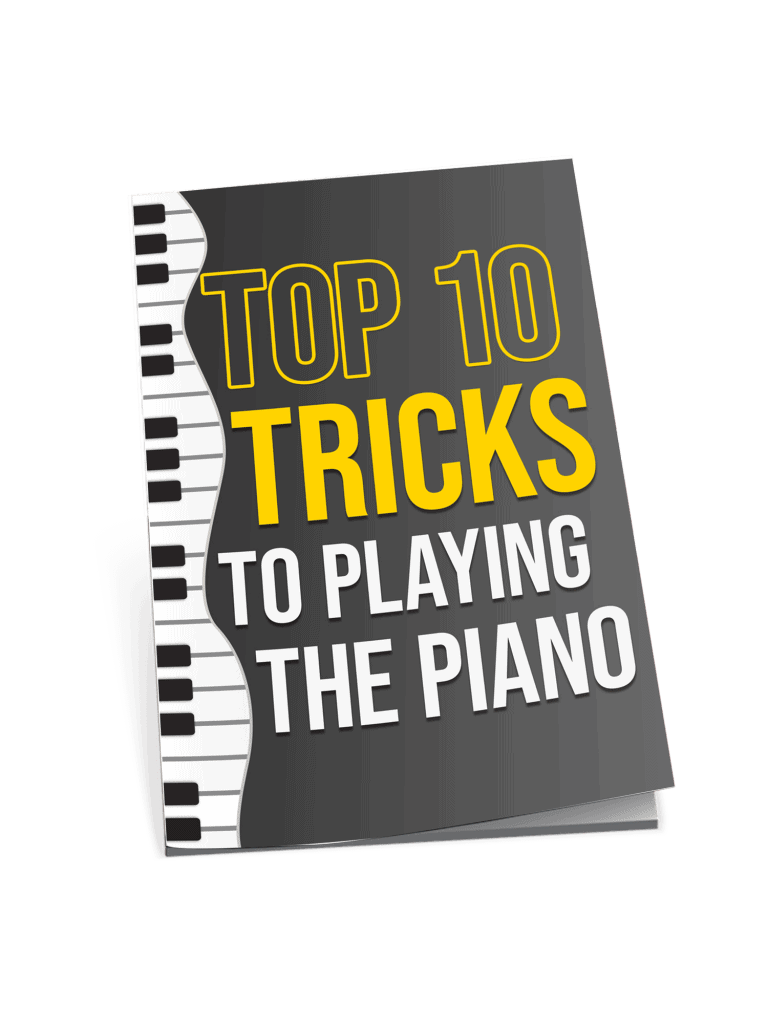When you think about an orchestra, you might picture the grand piano or towering double bass stealing the spotlight. But have you ever wondered what the tiniest instrument hiding among all those musicians might be?
The smallest instrument in an orchestra is typically the piccolo, a miniature flute that measures just 12 inches long yet produces some of the highest and most piercing sounds in the entire ensemble. However, the answer isn’t quite that simple since different instrument families each have their own smallest members.
From the delicate violin in the string section to tiny percussion instruments like castanets, each family contributes its own miniature marvel. You’ll discover how these small instruments pack an incredible musical punch that can cut through the sound of over 100 other musicians.
Defining the Smallest Instrument in an Orchestra
Determining the smallest instrument requires looking at physical dimensions, weight, and how instruments contribute to the orchestra’s overall sound. Different measurement methods can lead to different answers about which instrument truly claims the title.
Criteria for Measuring Instrument Size
Physical size isn’t the only way to measure an instrument’s dimensions in an orchestra. You need to consider length, width, height, and weight when comparing instruments.
Volume takes up the most obvious space consideration. A piccolo measures about 12 inches long, while a full-size violin spans roughly 24 inches.
Weight matters for musicians who must hold their instruments for hours. The violin is the smallest instrument in the string section but weighs more than many small percussion instruments.
Practical considerations include:
- Portability for musicians
- Storage space requirements
- Ease of handling during performance
- Manufacturing materials and density
Some instruments like castanets or triangles take up minimal space. Others like the piccolo are longer but extremely lightweight.
Revelle REV25 Student Violin Outfit

FEATURES: Solid wood construction, with a spruce top, flamed maple back, and sides.
OTHER INFO: Ebony fittings, a Despiau bridge, a Wittner Ultra tailpiece, and an attractive nitro varnish finish
- Includes all the tools budding violinists need to master the rudiments of their instrument
- Thomastik-Infeld Alphayue strings yield pliable playability and near-gut-like tone
- Slightly higher investment for beginners
When you click ‘Check Price’, you’ll see there are loads of great places to buy this item. Our personal favorite is Sweetwater for the US, and Thomann and Gear4Music for the UK & Europe.
They are the largest music retailers, with excellent customer service, competitive prices, really fast shipping, and the longest guarantees.
The professional musician who wrote this article combined many things,
from the product build, manufacturer’s reputation through to feedback
from other users, to create our famous TedScore™.
Common Contenders for the Smallest Instrument
Several instruments compete for the title of smallest in the orchestra. Your choice depends on which measurement criteria you use.
The piccolo stands as the most common answer. It measures about half the length of a regular flute and weighs significantly less than string instruments.
Castanets might be considered the smallest instrument in the orchestra when looking purely at dimensions. These small wooden percussion instruments fit in your palm.
Other contenders include:
- Triangle (thin metal rod bent into shape)
- Small cymbals or finger cymbals
- Tambourine (though larger models exist)
- Wood blocks used in percussion
The violin claims the title of smallest, highest-pitched instrument in the string family. However, it’s much larger than many wind and percussion instruments.
String players often argue that their violin deserves recognition. Wind players point to the piccolo’s compact design.
Role of the Smallest Instrument in Ensemble Sound
Small instruments often produce the highest pitches in their instrument families. You’ll notice they cut through the orchestra’s texture with bright, piercing tones.
The piccolo extends the flute section’s range upward. The violin will usually play the melody of a piece as its higher pitch can be heard over all the other instruments.
Small percussion instruments add rhythmic accents and special effects. Triangles create shimmering sounds that sparkle above the orchestra. Castanets provide distinctive clicking rhythms.
Sound characteristics of small instruments:
- Higher frequency ranges
- Penetrating power through thick orchestration
- Ability to add brightness and sparkle
- Clear articulation of fast passages
These instruments might be tiny, but their musical impact is huge. Composers use them strategically to highlight important moments or add textural variety to their orchestrations.
CREMONA SV-500
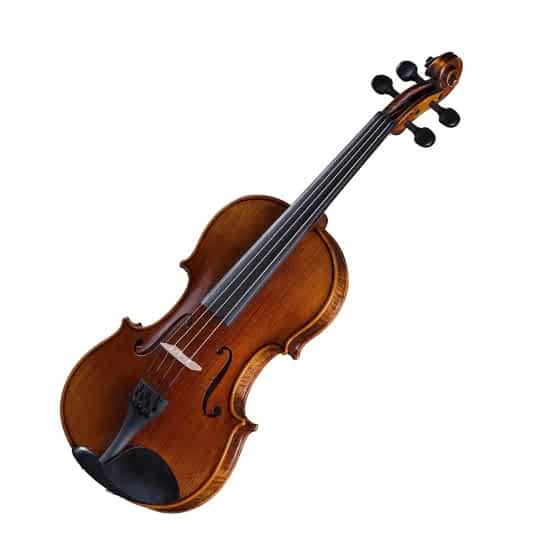
FEATURES: Handcrafted from select tonewoods for superior sound quality
OTHER INFO: Exceptional playability and responsivenesst
- Beautifully finished with an antique varnish for an elegant appearance
- Produces a rich, warm tone that is highly expressive
- Offers excellent projection and resonance, ideal for performances
- Higher price point compared to entry-level violins
When you click ‘Check Price’, you’ll see there are loads of great places to buy this item. Our personal favorite is Sweetwater for the US, and Thomann and Gear4Music for the UK & Europe.
They are the largest music retailers, with excellent customer service, competitive prices, really fast shipping, and the longest guarantees.
The professional musician who wrote this article combined many things,
from the product build, manufacturer’s reputation through to feedback
from other users, to create our famous TedScore™.
Piccolo: The Smallest Wind Instrument
The piccolo stands as the smallest wind instrument in the modern orchestra, measuring roughly half the size of a standard concert flute while producing sounds an octave higher. Its compact design and brilliant tone make it essential for adding sparkle and brightness to orchestral performances.
Physical Dimensions and Construction
The piccolo measures approximately half the length of a concert flute, typically around 12 inches long. This makes it the most compact member of the flute family you’ll find in orchestras.
Materials used in piccolo construction:
- Grenadilla wood (most common for professional instruments)
- Silver or nickel silver
- Plastic or resin (for student models)
- Brass
The piccolo features a conical body with a cylindrical head, unlike modern concert flutes which use cylindrical bores throughout. This design helps create its distinctive bright sound.
Most piccolos use the Boehm key system, giving you the same fingering patterns as a standard flute. The instrument typically has fewer keys than a full-sized flute due to its smaller range and size constraints.
Yamaha YPC32 Piccolo

COMES WITH: maintenance-free ABS resin body
FEATURES: A split-E mechanism to make your high E notes clearer
- Silver plated headjoint
- ABS resin body
- A great value Pirc
- Easy to play
- Pretty much indestructible!
- Great for flautists looking to explore the world of piccolo and develop a solid technique
- Can sound a little ‘plasticy’
- Low register is not as resonant as a wooden model.
When you click ‘Check Price’, you’ll see there are loads of great places to buy this item. Our personal favorite is Sweetwater for the US, and Thomann and Gear4Music for the UK & Europe.
They are the largest music retailers, with excellent customer service, competitive prices, really fast shipping, and the longest guarantees.
The professional musician who wrote this article combined many things,
from the product build, manufacturer’s reputation through to feedback
from other users, to create our famous TedScore™.
How the Piccolo Produces Sound
You create sound on the piccolo by blowing air across the embouchure hole, just like on a flute. The smaller size means you need less air volume but more focused airstream control.
The piccolo sounds exactly one octave higher than written music, making it a transposing instrument. When you play a written middle C, the actual sound produced is the C one octave higher.

Your embouchure must be more precise and compact than for flute playing. The smaller lip plate requires careful positioning to achieve proper intonation and tone quality.
The conical bore design amplifies the higher harmonics, giving the piccolo its characteristic bright and penetrating sound. This construction allows the instrument to cut through even the largest orchestral textures.
Typical Role of the Piccolo in Orchestras
The piccolo adds brightness and brilliance to orchestras, often doubling violin parts an octave higher. You’ll hear it providing sparkle to climactic moments and adding color to orchestral textures.
Common orchestral uses include:
- Doubling flute melodies at the octave
- Creating brilliant effects in fortissimo passages
- Adding brightness to woodwind choir sections
- Playing solo passages requiring extreme high register
The piccolo became a standard orchestral member in the early 1800s, though composers like Jean-Philippe Rameau used it earlier. Its penetrating sound makes it audible even when the full orchestra plays at maximum volume.
You’ll typically find one piccolo player in most orchestras, often played by the second or third flutist. The instrument’s powerful projection means a single player can balance against entire string sections when playing in its upper register.
Pearl PFP-105E Piccolo

COMES WITH: Split E Mechanism
FEATURES: A cylindrical headjoint and pinless construction
- ‘Wave’ head joint which can improve tone production
- Made from the innovative, new material Grenaditte
- Great tone quality
- More durable than wood
- Resin-infused instruments aren’t to everybody’s taste
When you click ‘Check Price’, you’ll see there are loads of great places to buy this item. Our personal favorite is Sweetwater for the US, and Thomann and Gear4Music for the UK & Europe.
They are the largest music retailers, with excellent customer service, competitive prices, really fast shipping, and the longest guarantees.
The professional musician who wrote this article combined many things,
from the product build, manufacturer’s reputation through to feedback
from other users, to create our famous TedScore™.
Violin: The Smallest String Family Instrument
The violin stands as the smallest member of the orchestra’s string family, measuring just 2 feet in length while producing the highest and brightest sounds. Its compact size allows it to reach frequencies that larger string instruments cannot achieve, making it essential for carrying melodies in classical music.
Violin Size Compared to Other Strings
When you examine the four main types of orchestra string instruments, the violin clearly wins as the tiniest. A full-sized violin measures around 2 feet long, making it significantly smaller than its string family relatives.
The viola comes next in size, being slightly larger than the violin with a deeper body. You’ll notice the cello towers over both, requiring you to sit while playing it between your legs.
The double bass stands as the giant of the group. It’s so tall that you must stand or sit on a high stool to play it properly.
String Family Size Comparison:
- Violin: ~2 feet (smallest)
- Viola: ~2.3 feet
- Cello: ~4 feet
- Double Bass: ~6 feet (largest)
This size difference directly affects the pitch each instrument produces. The smaller the instrument, the higher the sounds it creates.
Violin's Range and Register
Your violin produces the highest sounds in the string section because of its small size and thin strings. The violin boasts the highest range, starting from G3 just below middle C and reaching up to A7 on the E string.
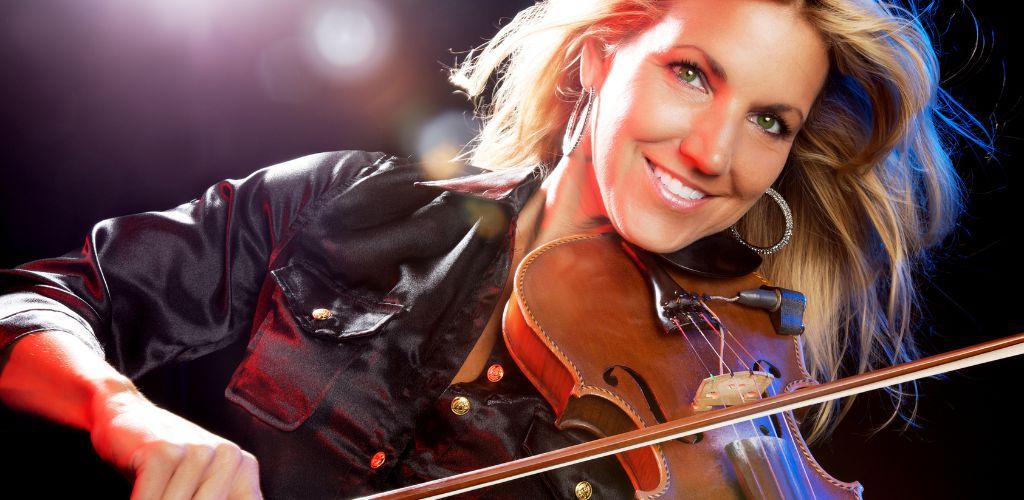
The violin’s four strings are tuned to specific pitches: G, D, A, and E. The E string produces the brightest, most piercing tones that can soar above entire orchestras.
You can play notes spanning more than three octaves on a single violin. This wide range lets violinists perform both low, warm melodies and brilliant, sparkling high notes that cut through dense orchestral textures.
The instrument’s soprano register makes it perfect for carrying main melodies. When composers want audiences to hear a tune clearly, they often give it to the violins first.
Importance of the Violin in Orchestra
The violin typically forms the largest section of the orchestra, with up to 30 violins playing at once. You’ll find them divided into two groups: first violins and second violins, each with distinct musical roles.
First violins usually carry the main melodies because their bright, sweet tone cuts through other instruments. Second violins provide harmony and counter-melodies that support the musical foundation.
The violin section sits at the front left of most orchestras. This prominent placement reflects their importance in classical music arrangements.
Key Orchestra Roles:
- Melody carriers: Lead most musical themes
- Harmonic support: Fill in chord structures
- Rhythmic drive: Provide forward momentum
- Dynamic range: From whisper-soft to powerfully loud
Without violins, orchestras would lose their most versatile and expressive voice. They bridge the gap between woodwinds and lower strings, creating seamless musical textures that define classical music’s rich sound.
Eastman VL701 Rudoulf Doetsch Professional Violin Outfit

FEATURES: Handmade violin by master luthiers using highly select German tonewoods
OTHER INFO: Boasts a set of Evah Pirazzi strings
- Coated with an Antiqued Spirit Varnish
- Comes with a violin case and bow
- Expensive for budget-conscious musicians
When you click ‘Check Price’, you’ll see there are loads of great places to buy this item. Our personal favorite is Sweetwater for the US, and Thomann and Gear4Music for the UK & Europe.
They are the largest music retailers, with excellent customer service, competitive prices, really fast shipping, and the longest guarantees.
The professional musician who wrote this article combined many things,
from the product build, manufacturer’s reputation through to feedback
from other users, to create our famous TedScore™.
Percussion Outliers: Castanets and Other Tiny Instruments
Castanets are small wooden percussion instruments that create clicking sounds, while other tiny percussion instruments like triangles and finger cymbals add unique textures to orchestral music. These miniature instruments pack surprising power despite their compact size.
About Castanets and Their Dimensions
Castanets consist of two pieces of hard wood shaped like shells that are connected by a string. Each piece typically measures about 2-3 inches across and weighs just a few ounces.
The name comes from the Spanish word “castañuelas,” which means chestnut. This makes sense because the wooden pieces look similar to chestnut shells when closed.
You hold one castanet in each hand and click the wooden pieces together to make sound. The clicking sound is often associated with Spanish dances and adds rhythmic excitement to orchestral pieces.
Professional orchestra players sometimes use machine-mounted castanets instead of handheld ones. These allow for more precise timing and consistent sound quality during complex musical passages.
The wood type affects the sound quality. Hardwoods like ebony or rosewood produce sharper, clearer clicks than softer woods.
Other Small Percussion Instruments in Orchestras
Many other small percussion instruments appear in orchestras alongside castanets.
The triangle creates a bright, ringing sound when struck with a metal beater.
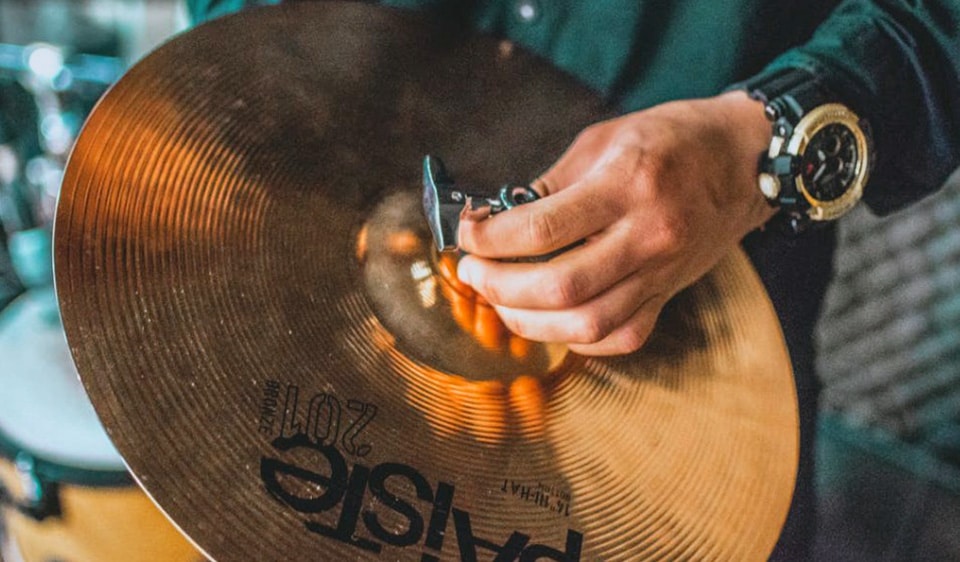
Finger cymbals are tiny versions of regular cymbals that you can hold between your fingers. They produce delicate, shimmering sounds perfect for quiet musical moments.
Wood blocks are small rectangular pieces of hardwood that create sharp clicking sounds. You strike them with mallets to add rhythmic accents to orchestral music.
Sleigh bells consist of small metal balls inside hollow spheres attached to a handle. They shake to create the jingling sound you hear in holiday music.
These small percussion instruments add unique flavors to orchestral compositions. Each one serves a specific purpose in creating the full range of sounds that make orchestral music so rich and varied.
Comparing Instruments: Size vs. Musical Impact
Size doesn’t always determine an instrument’s importance in the orchestra. The tiniest instruments often produce the most piercing sounds, while larger instruments anchor the entire ensemble with their deep, rich tones.
Smallest Instruments by Each Family
The string family features the violin as its smallest member, yet it forms the backbone of most orchestral pieces. You’ll find up to 30 violins in large orchestras because their bright, singing tone carries melodies beautifully.
Wind instruments showcase the piccolo as their tiniest representative. This small flute produces sounds that soar above the entire orchestra, cutting through even the loudest passages with crystal clarity.
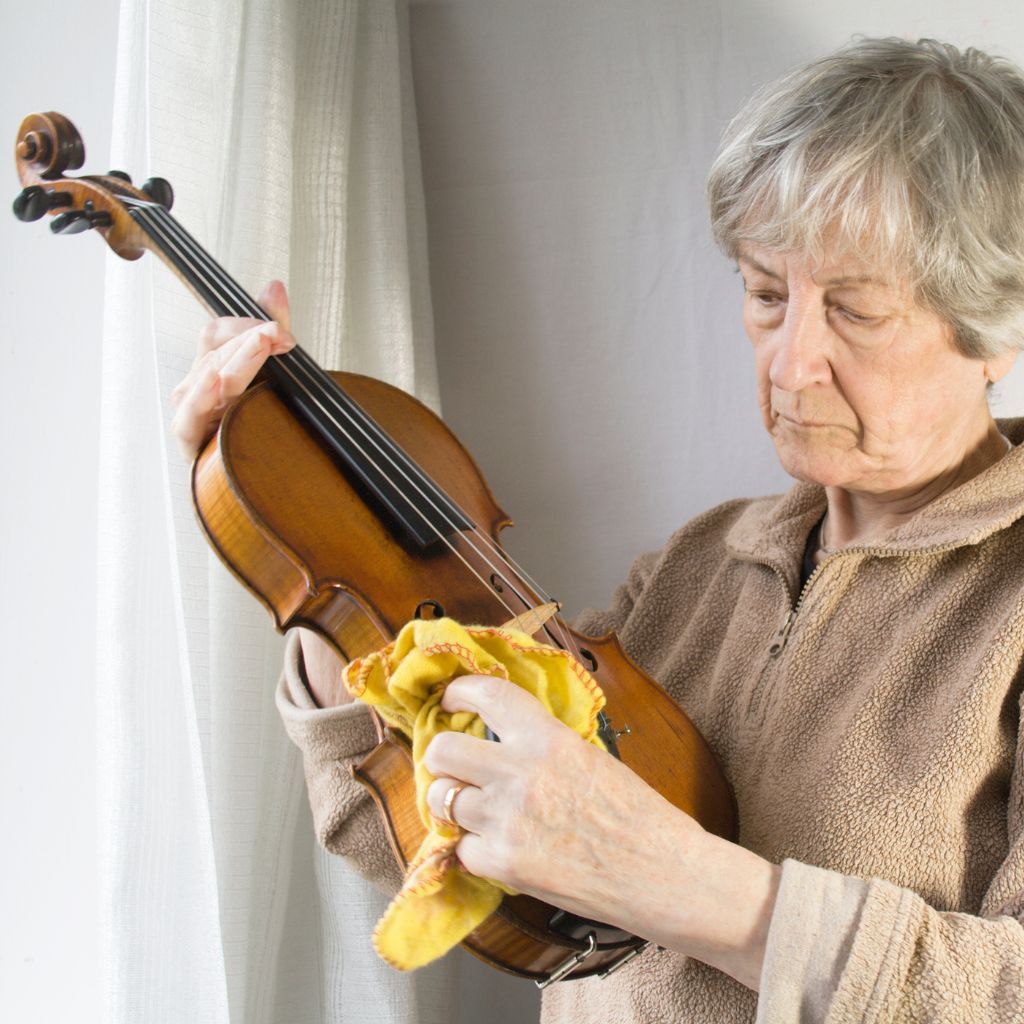
The percussion family presents a challenge when identifying its smallest member. Castanets might be considered the smallest orchestral percussion instrument, though many tiny percussion pieces compete for this title.
Brass instruments don’t typically have extremely small versions in standard orchestras. The trumpet represents the higher, more compact end of this family while still maintaining substantial size.
How Size Relates to Pitch and Octave
Smaller instruments produce higher pitches due to basic physics principles. When you shorten a string, tube, or resonating chamber, the sound waves vibrate faster, creating higher frequencies.
The piccolo demonstrates this perfectly by playing an octave higher than its larger cousin, the flute. Its compact tube length forces air to vibrate at much higher frequencies than longer wind instruments.
String instruments follow this same pattern throughout their family. Violin strings are shorter and thinner than viola strings, which are shorter than cello strings, creating a descending pitch progression.
Your ear can easily distinguish these pitch differences during performances. The smallest instruments often handle the soprano voice parts, while progressively larger instruments take on alto, tenor, and bass roles.
Yamaha YFL-222 Student Flute with Offset G Key System

DESIGNED FOR: Beginners
FEATURES: The design is based on Yamaha's Professional Series flutes.
OTHER INFO: Nickel silver construction provides increased durability and a rich tone.
Yamaha YFL-222 Student Flute with Offset G Key System
- Hand-assembled silver-plated keys.
- Comfortable offset G key system.
- Includes case.
- While some players find the offset G key comfortable, others may prefer an inline G key system, so it's a matter of personal preference.
When you click ‘Check Price’, you’ll see there are loads of great places to buy this item. Our personal favorite is Sweetwater for the US, and Thomann and Gear4Music for the UK & Europe.
They are the largest music retailers, with excellent customer service, competitive prices, really fast shipping, and the longest guarantees.
The professional musician who wrote this article combined many things,
from the product build, manufacturer’s reputation through to feedback
from other users, to create our famous TedScore™.
The Relationship Between Size and Role in Music
Small instruments often serve as the orchestra’s spotlight performers. The piccolo’s piercing tone can represent birds, storms, or magical elements that composers want to highlight dramatically.
Violin sections demonstrate how small size enables versatility. Their compact nature allows rapid finger movements and intricate passages that larger string instruments cannot execute as easily.
Percussion instruments like castanets add rhythmic accents and color rather than sustained melodies. Their small size makes them perfect for quick, sharp sounds that punctuate musical phrases.
Size also affects how you physically play each instrument. Smaller instruments require more precise finger positioning and breath control, while larger instruments demand different physical techniques and stamina from performers.
Historical and Musical Significance
The smallest orchestral instruments have shaped classical music for centuries, with the piccolo emerging in the 18th century and the violin evolving since the Renaissance. These compact instruments became essential voices in orchestral compositions, often carrying melodies and adding brilliance to ensemble pieces.
Evolution of the Smallest Orchestral Instruments
The violin reached its modern form during the 16th century in Italy. Master craftsmen like Antonio Stradivarius perfected its design, creating instruments that remain prized today.
You’ll find that the violin became the smallest instrument in the string section and the highest in pitch. The instrument’s compact size made it perfect for intricate melodies and rapid passages.

The piccolo followed a different path. Military forces used octave transverse flutes since the Middle Ages because their sharp sound cut through battle noise.
Jean Philippe Rameau first used piccolos in cultured music during the first half of the 18th century. The instrument gained a stable place in orchestras only around 1800.
The piccolo maintained baroque flute construction until the late 1800s. It then adopted the Boehm mechanism, which became standard during the 1900s.
Notable Uses in Classical Music
Mozart included the piccolo in his opera Idomeneo. Paris opera orchestras sometimes used small transverse flutes at the octave as early as 1735.
Many believe Beethoven’s Symphony No. 5 featured early piccolo use, but this is actually a myth. Composers like Franz Anton Hoffmeister and Michael Haydn used it in their symphonies before Beethoven.
The violin sections in symphony orchestras split into First Violins and Second Violins. First Violins typically carry the main melody while Second Violins provide harmony support.
John Philip Sousa wrote a famous piccolo solo for “The Stars and Stripes Forever.” He composed it specifically for the D♭ piccolo, an earlier model of the modern instrument.
Key Classical Repertoire:
- Mozart’s violin concertos showcase the instrument’s melodic capabilities
- Vivaldi’s “Four Seasons” features prominent violin solos
- Tchaikovsky’s symphonies use piccolo for dramatic effects
- Sousa marches highlight piccolo’s piercing brilliance
These common questions address the piccolo’s role compared to other instruments, instrument family classifications, and orchestra composition details.
FAQ's
The piccolo plays much higher notes than the regular flute and often adds bright, piercing accents to musical passages. While the flute carries melodies and longer musical lines, the piccolo provides special effects and highlights.
You’ll hear the piccolo during dramatic moments when composers want to cut through the full orchestra sound. The flute has a warmer, more mellow tone that blends well with other instruments for sustained melodies.
The piccolo belongs to the woodwind family of instruments, just like the flute, oboe, and clarinet. Even though it’s made of metal or wood, it’s classified as a woodwind because of how you play it.
You blow air across an opening to create sound, which is the same technique used for all flute-family instruments. This makes it different from brass instruments where you buzz your lips into a mouthpiece.
The string family includes violins, violas, cellos and double basses as the main instruments. You’ll find first violins and second violins as separate sections in most orchestras.
The violin is the smallest instrument in the string family and makes up the largest part of the orchestra. Orchestras can have up to 30 violins playing together in major works.
The piccolo trumpet sounds much higher and brighter than a regular trumpet. It’s smaller in size and typically pitched in B-flat or A, making it perfect for very high musical parts.
You’ll often hear piccolo trumpets in baroque music or modern pieces that need extremely high brass notes. The standard trumpet is the smallest of the regular brass instruments but the piccolo trumpet goes even higher.
The oboe uses a double reed made of two pieces of cane bound together, unlike the flute which has no reed. This double reed gives the oboe its distinctive nasal, penetrating sound.
You can easily pick out the oboe’s voice in orchestra music because of its unique timbre. It often plays important solos and helps tune the orchestra before concerts.
A full symphony orchestra typically contains between 70 to 100+ musicians playing various instruments. Large symphony orchestras can have more than 100 musicians depending on the piece being performed.
You’ll find the exact number varies based on what music the orchestra is playing. Some pieces require extra instruments while others use smaller groups.


